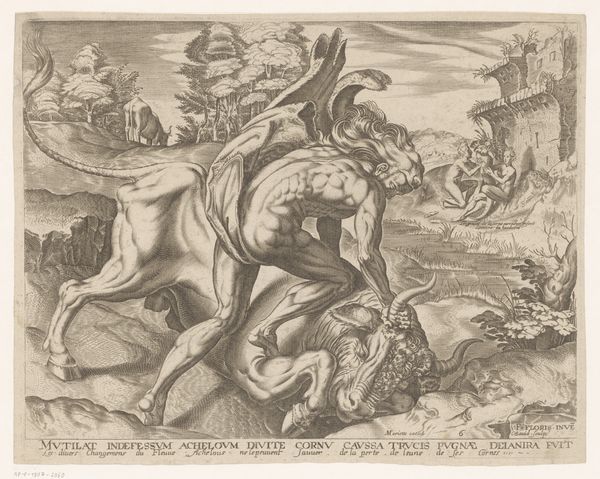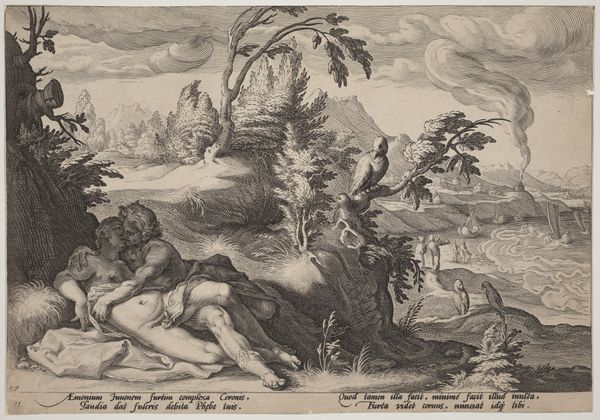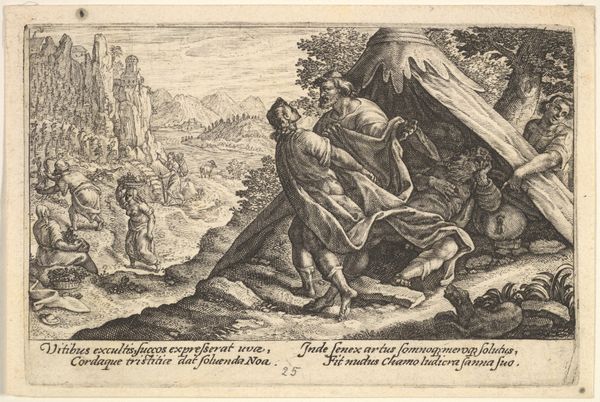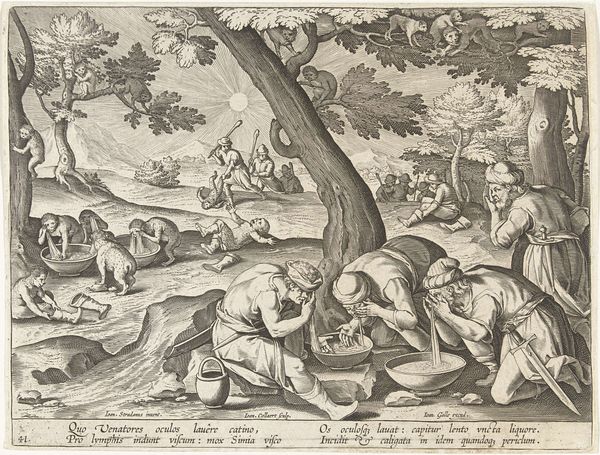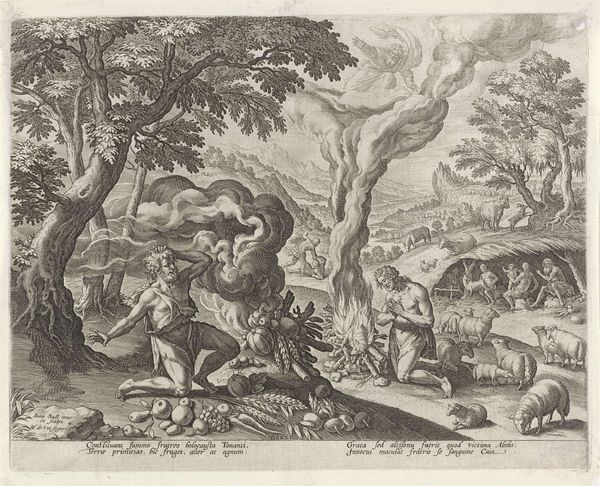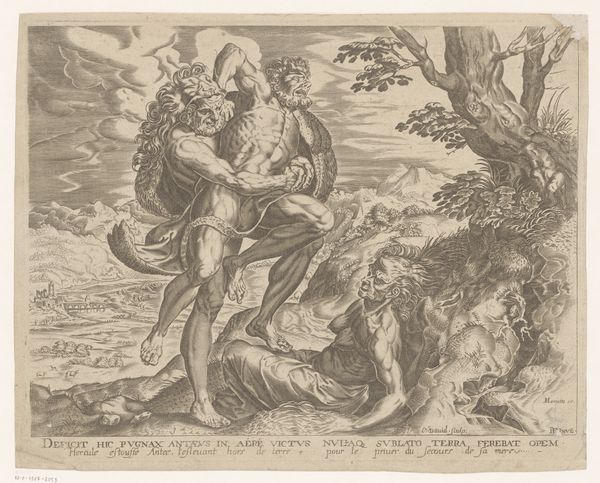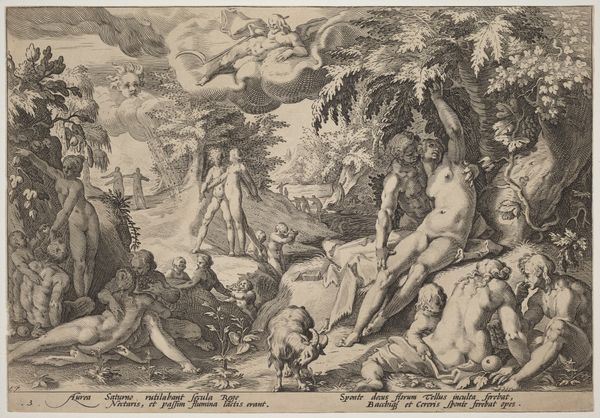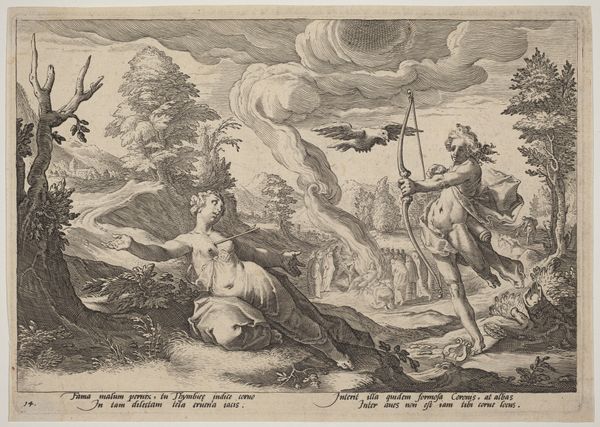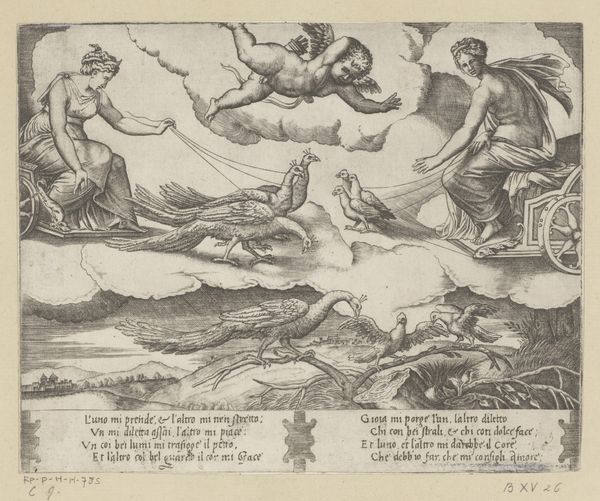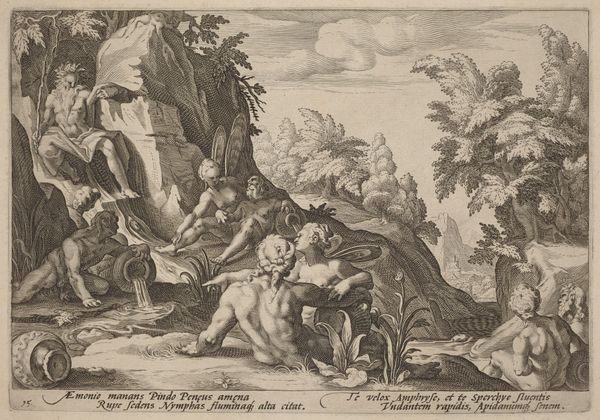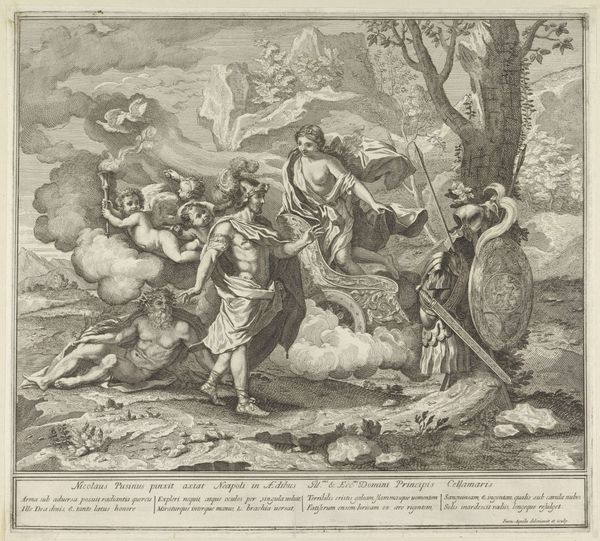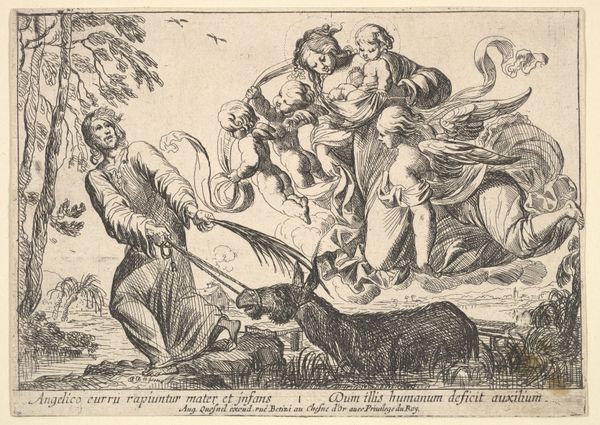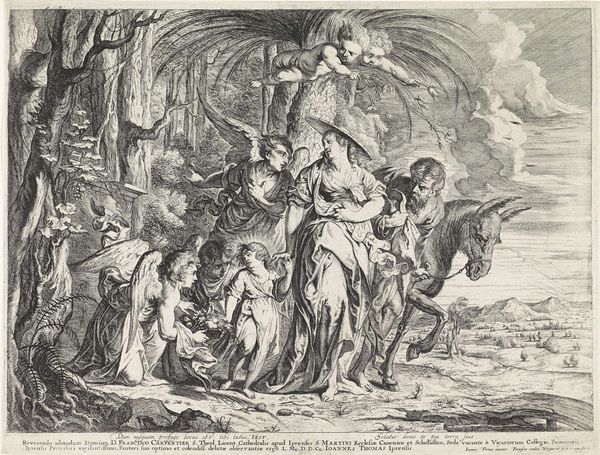
print, engraving
#
ink drawing
#
allegory
#
narrative-art
# print
#
mannerism
#
figuration
#
history-painting
#
northern-renaissance
#
engraving
Dimensions: plate: 18.5 x 26 cm (7 5/16 x 10 1/4 in.) sheet: 26.5 x 35 cm (10 7/16 x 13 3/4 in.)
Copyright: National Gallery of Art: CC0 1.0
Curator: What an arresting scene. This is Hendrick Goltzius' engraving, "Juno Turning Callisto into a Bear," from around 1589. Editor: The fury jumps right off the page, doesn't it? There's a palpable sense of violation in the image. Curator: Absolutely. Goltzius masterfully depicts the moment Juno exacts revenge on Callisto for her infidelity with Jupiter. We see Juno looming over the fallen nymph, arm raised, presumably casting the spell. Editor: And Callisto—the exposed vulnerability, her body twisting in distress, hands clasped in what seems to be utter terror. It's really wrenching. The performative nature of Juno’s wrath raises a lot of questions around the politics of power. Who is allowed to wield such anger and against whom? Curator: Considering the context of its creation, in the late 16th century during the Northern Renaissance, the print functioned both as an artwork and as a commentary on contemporary social issues, particularly power structures, and morality within marriage. This print circulated widely and served as visual material through which discourses around these issues would be visualized and engaged. Editor: So, in that light, Juno could be seen as a representation of societal expectations, even constraints, imposed upon women in that period? The consequences of stepping outside the line drawn by a patriarchal system so literally cast onto Callisto as bodily horror. I wonder how early audiences responded to this depiction of divine abuse. Curator: It's highly plausible that audiences brought those considerations. What is quite brilliant in Goltzius’s take on the story, too, is how the background anticipates Callisto’s tragic future. The metamorphosis is already happening in the back as the animal becomes the character herself. Editor: A slow and gruesome transformation in the forest itself. This image definitely sparks uncomfortable, but vital discussions, revealing much about power and consequence both in mythology and social norms of that era, resonating even now. Curator: I think the stark lines and contrast Goltzius employs definitely amplifies the discomfort—but also demands that the viewer look, see, and consider those uncomfortable implications. Editor: Yes, it is difficult to turn away from.
Comments
No comments
Be the first to comment and join the conversation on the ultimate creative platform.
